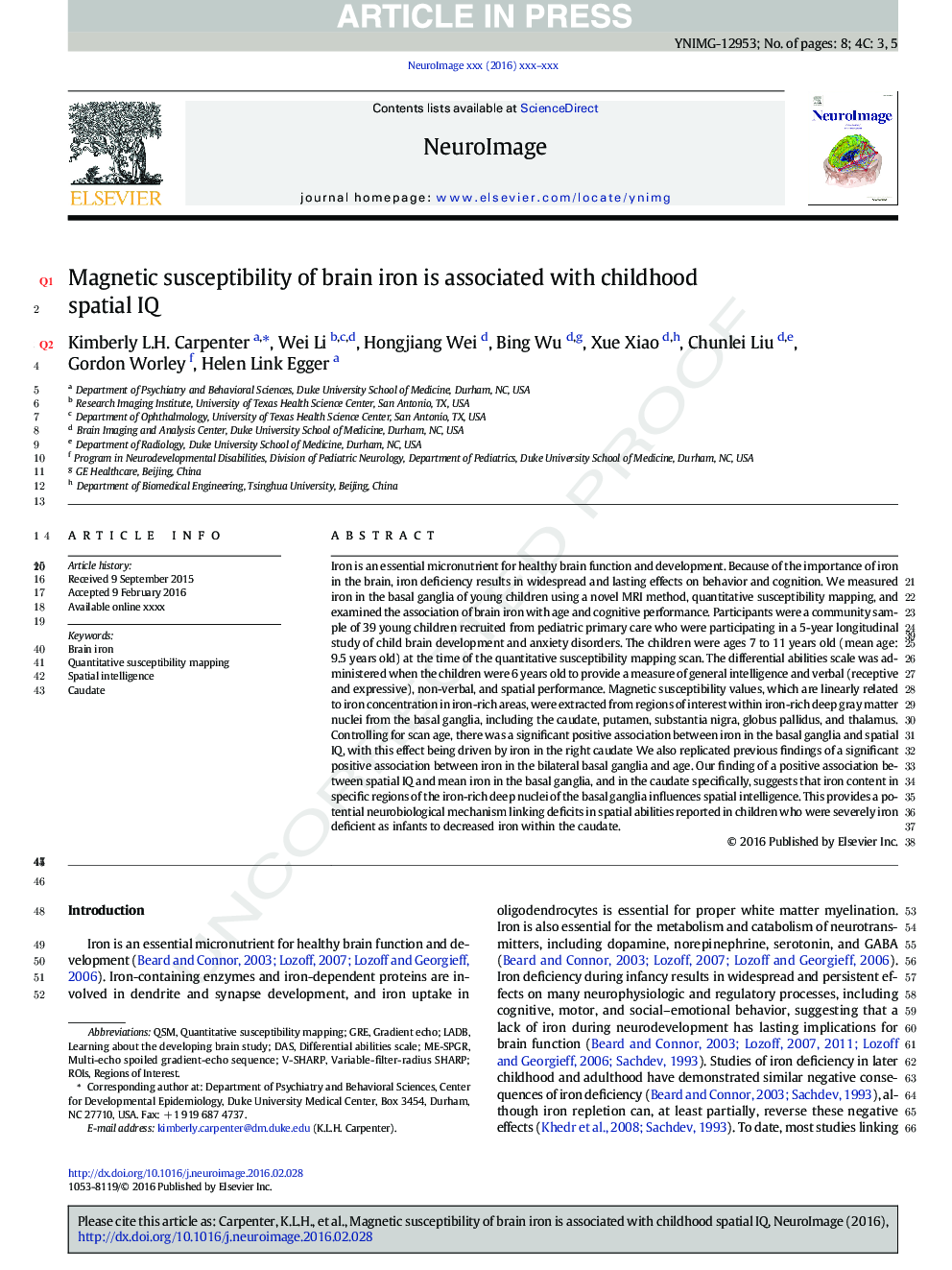| کد مقاله | کد نشریه | سال انتشار | مقاله انگلیسی | نسخه تمام متن |
|---|---|---|---|---|
| 6023706 | 1580876 | 2016 | 8 صفحه PDF | دانلود رایگان |
عنوان انگلیسی مقاله ISI
Magnetic susceptibility of brain iron is associated with childhood spatial IQ
دانلود مقاله + سفارش ترجمه
دانلود مقاله ISI انگلیسی
رایگان برای ایرانیان
کلمات کلیدی
موضوعات مرتبط
علوم زیستی و بیوفناوری
علم عصب شناسی
علوم اعصاب شناختی
پیش نمایش صفحه اول مقاله

چکیده انگلیسی
Iron is an essential micronutrient for healthy brain function and development. Because of the importance of iron in the brain, iron deficiency results in widespread and lasting effects on behavior and cognition. We measured iron in the basal ganglia of young children using a novel MRI method, quantitative susceptibility mapping, and examined the association of brain iron with age and cognitive performance. Participants were a community sample of 39 young children recruited from pediatric primary care who were participating in a 5-year longitudinal study of child brain development and anxiety disorders. The children were ages 7 to 11Â years old (mean age: 9.5Â years old) at the time of the quantitative susceptibility mapping scan. The differential abilities scale was administered when the children were 6Â years old to provide a measure of general intelligence and verbal (receptive and expressive), non-verbal, and spatial performance. Magnetic susceptibility values, which are linearly related to iron concentration in iron-rich areas, were extracted from regions of interest within iron-rich deep gray matter nuclei from the basal ganglia, including the caudate, putamen, substantia nigra, globus pallidus, and thalamus. Controlling for scan age, there was a significant positive association between iron in the basal ganglia and spatial IQ, with this effect being driven by iron in the right caudate We also replicated previous findings of a significant positive association between iron in the bilateral basal ganglia and age. Our finding of a positive association between spatial IQ and mean iron in the basal ganglia, and in the caudate specifically, suggests that iron content in specific regions of the iron-rich deep nuclei of the basal ganglia influences spatial intelligence. This provides a potential neurobiological mechanism linking deficits in spatial abilities reported in children who were severely iron deficient as infants to decreased iron within the caudate.
ناشر
Database: Elsevier - ScienceDirect (ساینس دایرکت)
Journal: NeuroImage - Volume 132, 15 May 2016, Pages 167-174
Journal: NeuroImage - Volume 132, 15 May 2016, Pages 167-174
نویسندگان
Kimberly L.H. Carpenter, Wei Li, Hongjiang Wei, Bing Wu, Xue Xiao, Chunlei Liu, Gordon Worley, Helen Link Egger,